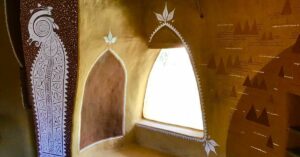10 Ways Indians Combined Tradition with Innovation to Build the Most Sustainable Homes
Looking for inspiration to build your eco-friendly home? These 10 architectural ideas combine innovation with traditional means of construction to design homes on the base of sustainability.
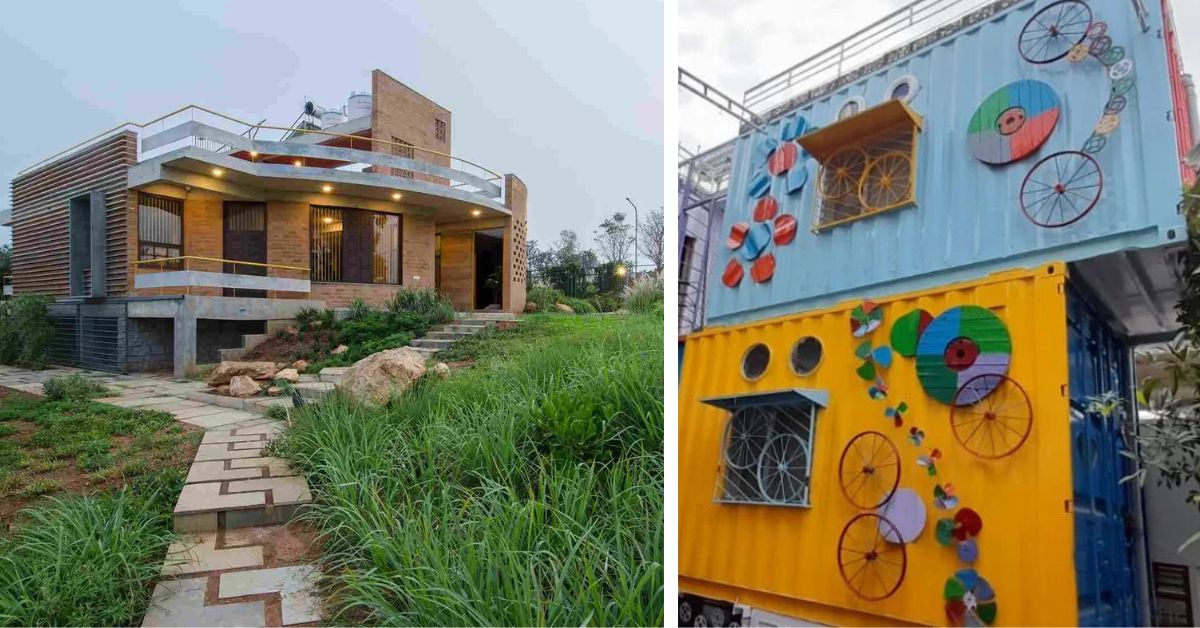
“Metropolitan cities are the most unlikely places for a sustainable home.”
If you are someone of this ideology, we beckon you to rethink it. In the recent past, the landscapes of metropolitans have found themselves dotted with eco-friendly properties in residences that once only boasted high rises.
We’ve put together 10 fascinating properties across India — made with plastic, shipping containers, recycled wood and what-not! If 2024 is the year you are looking to step into a sustainable plot, here’s some inspiration for you.
1. House O
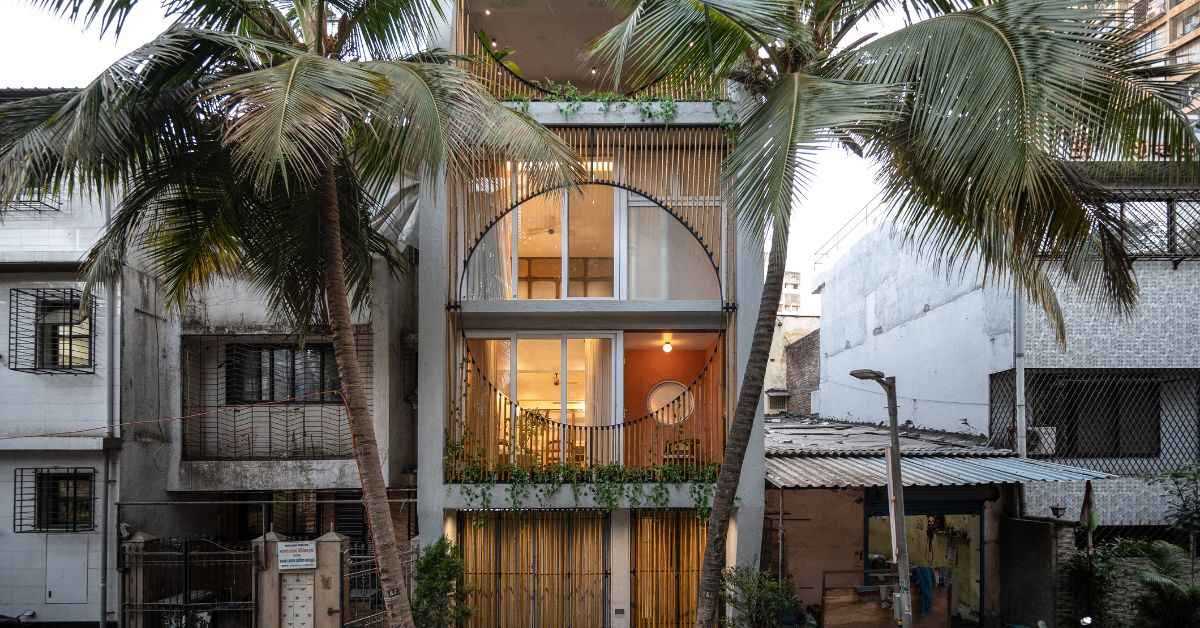
Mumbai’s bustling urban jungle and cross ventilation are a duo that’s unheard of. You will most likely agree with this. But, meet the architect duo that’s muting the myth with their sustainable ‘House O’ in the Kandivali suburbs of the city. Harsh Soneji and Pratha Bhagat are the brains behind Studio MAT Architects, a firm that prides itself on green design philosophies.
“Of course, a zero carbon footprint is tough to achieve,” notes Soneji. But, he is quick to add, “There are ways to minimise the construction’s load on the environment.” Other homes in the neighbourhood pale in comparison before House O with its bamboo facade, solar panels, interior lime plaster finishes, and rainwater harvesting.
Sharing the design philosophy, Soneji says, “We aimed to allow in as much light as possible so our clients could just leave the windows open. We also added a bamboo screen with creepers that would cool the air entering into the house.”
Additional cooling is provided by the lime plaster coat on the walls that renders them thermosensitive.
2. Breathe
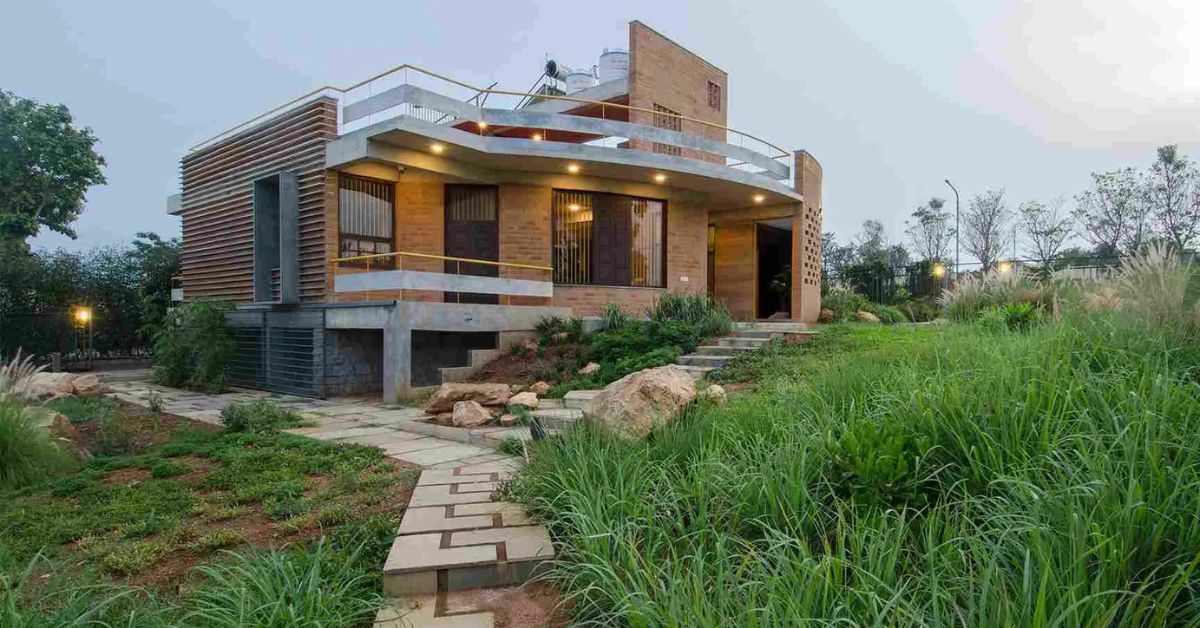
You aren’t a stranger to high rises where flats pile on top of each other, resembling a card deck. The founders of Betweenlines, Deepa Suriyaprakash and Guruprasanna C, an architect duo weren’t either. Their company is an award-winning urban, architectural, and interior design firm which was founded in 2003.
So, when approached by a couple to create a sustainable home design, the duo was elated to fashion a home that could ‘breathe’.
As you unravel the many sustainable features of this 8,000 sq ft property, you’ll understand the metaphor in depth. The home has a natural brick finish gratis CSEB (Compressed Stabilised Earth Blocks) which also makes it resistant to mould growth. The foundation is made with tyres that have rammed earth filled in them and provide stability to the structure. Adding to its beauty are the Athangudi tiles, a garden that’s filled with organic produce, decor made out of upcycled wood and a greywater system to complete it.
3. The LGSF home
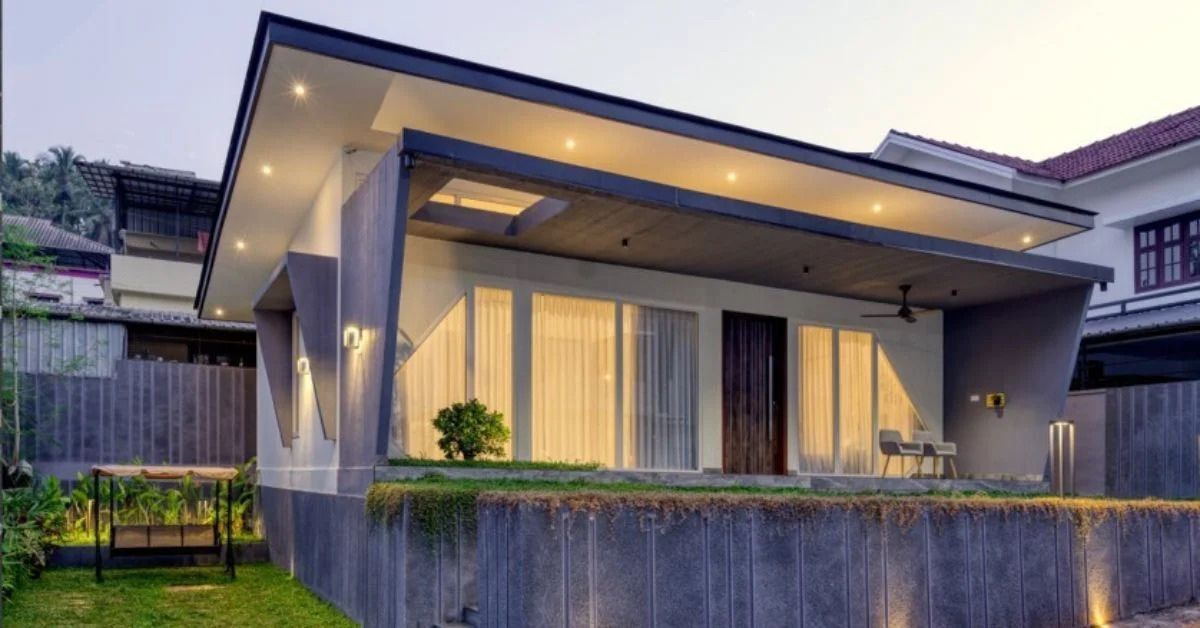
Would you like to pack your home over the weekend and move to an exotic locale? This distant dream of Kerala-based Dr Jayakumar and his family was fulfilled by engineer Majid TK, who elaborates on the concept of the Light Gauge Steel Frame (LGSF) technology.
The hero element is cold-formed steel. Aside from the fascinating lightweight quality that makes it moveable, the technology gives the home a high strength-to-weight ratio, ensuring it is resilient in the face of disasters.
The steel structure sections are fabricated using advanced machinery and then fitted with cladding that includes fibre cement, calcium silicate boards, and Ferro cement. The extra insulation material in the cavities helps to lower the temperature of the home in summer.
4. The shipping container home

Hyderabad-based M V Ramachandrudu’s 2,700 square feet plot of land holds not just an organic garden — where he cultivates 40 varieties of trees — but also a home made out of recycled materials like cycle rims, old glass doors, and shipping containers sourced from cargo companies.
Not just the home, but even the shed is a work of art. Made out of styrofoam, the building process is said to save the topsoil layer that is otherwise exploited during construction.
Elaborating on this, he shares, “We first crushed styrofoam and mixed it with cement to make bricks. If the red brick weighs 3.3 kg, the styrofoam one would weigh nearly 2.5 kg. The advantage of using such bricks is that close to 70 percent of the brick is made from scrap.”
5. Estate Plavu
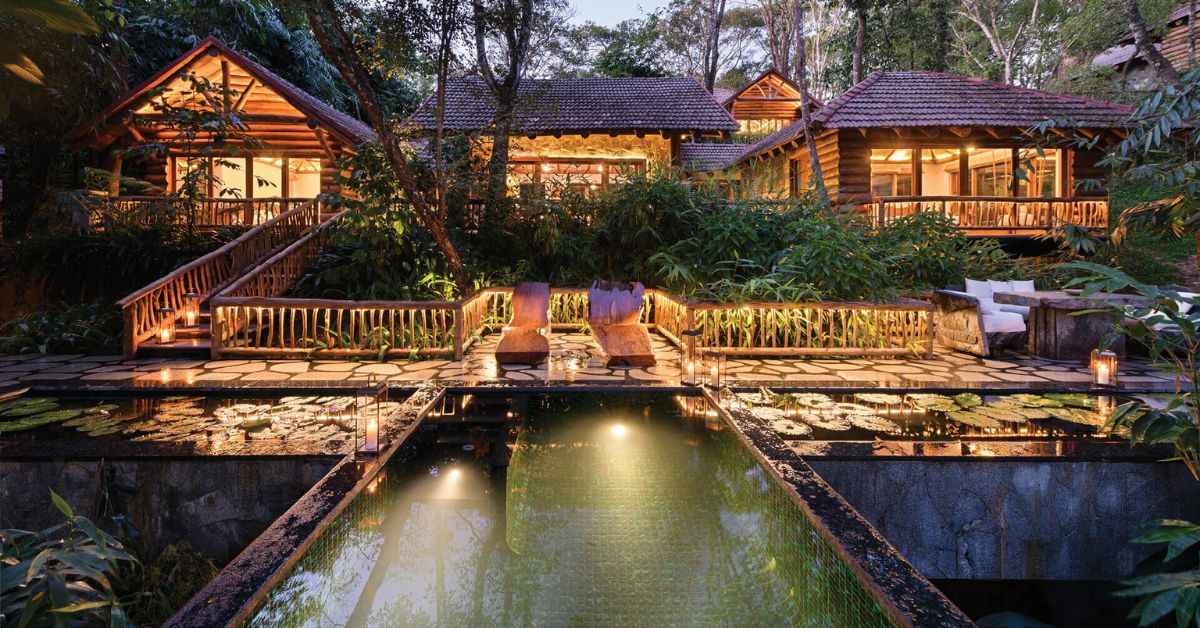
A masterpiece of Bengaluru architect George Ramapuram of the firm Earthitects, the home gives a glorious view of Wayanad, Kerala. Constructing a plot in a densely forested area is not easy. But Ramapuram was intent that no trees be cut during the process of building.
A closer look at the home reveals the unusual set of ingredients that come together to complete it — stones from Kalpetta (a town in the mountainous Wayanad region), clay tiles, and random rubble. The plot is a prime example of merging fashion with sustainability. A walk through the home gives a glimpse into the eucalyptus poles in the ceiling, customised-finish granite for counters, cobblestone for pathways, logs for rafters and stone for the deck floors.
6. Karai

When Principal architects of RAIN Studio of Design, Vamsi Krishna M, Sriram Adhitya, and Balashanmugam were approached with a request to fashion a traditional nalukettu house (a conventional type of architecture found in Kerala, characterised by a rectangular shape composed of four sections joined by an open courtyard and a sloped roof), they knew it would be a journey back to their roots.
Karai in the coastal village of Kuvathur, 80 km from Chennai, is an ode to South Indian architectural styles and seems to be designed using the latest materials. But look again and you will see, it is the reclaimed material that lends it beauty.
“We kept upcycling as our core ideology, but there was intense research involved in this. We came up with a lot of iterations and managed to use the reclaimed materials to their highest potential,” says Vamsi. He refers to the Mangalore tiles that make up 75 percent of the home.
“In fact, by repurposing the doors and windows, the wastage in materials and the carbon footprint of making new materials has been cut down.”
7. The Mudhouses
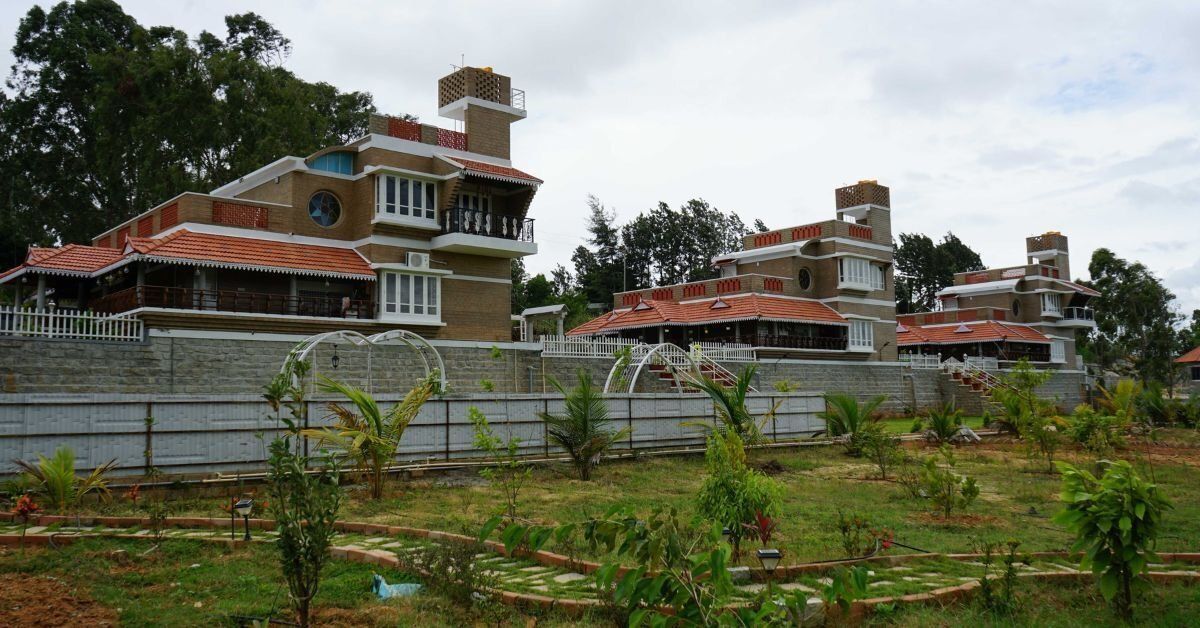
Anirudh Jagannathan of Mahijaa Consultants is the brains behind this project designed for three friends who were looking for their farmhouses to stand on a cliff overlooking the Bannerghatta forest in Karnataka. While the trio insisted on an open-plan system with as few walls as possible, Anirudh says this ended up complementing the natural aesthetic of the home.
Mud is the hero element with stone filling in the spaces. The home sits on an organic farm that bears no resemblance to its once-barren appearance. Now, fruit-bearing trees, chillies, tomatoes, potatoes, legumes and rice fill the land.
8. Sunnymead
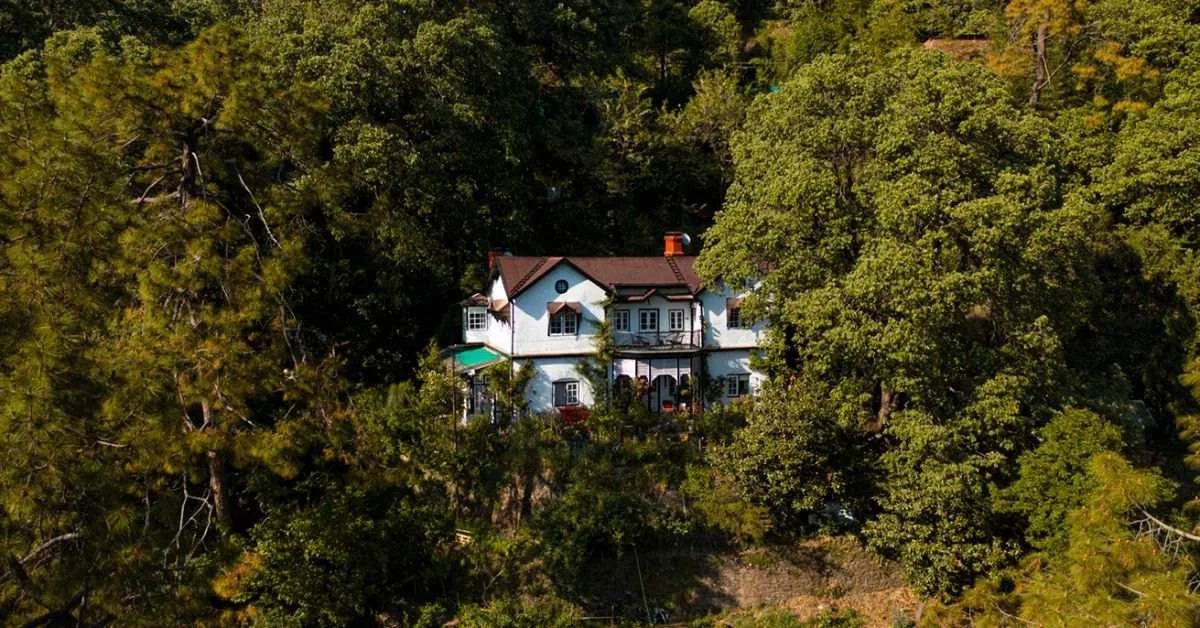
While earthquakes shake the foundations of Himachal Pradesh from time to time, a homestay ‘Sunnymead’ remains withstanding. The secret lies in its foundation built using the century-old dhajji dewari style. Today, Sunnymead welcomes tourists from across India, as Delhi-born Madhavi Bhatia bustles to make them feel at home.
Elaborating on how her ancestral home has been kept safe by the traditional architectural style, she says, “The house built with dhajji architecture is not a rigid structure. It does not have any nails. Instead, the wooden pillars and beams have grooves where wooden slabs are inserted. There is plaster work inside and outside comprising clay, cow dung and pine needles.”
The lack of nails leaves the structure flexible to move but not break.
9. The jungle home
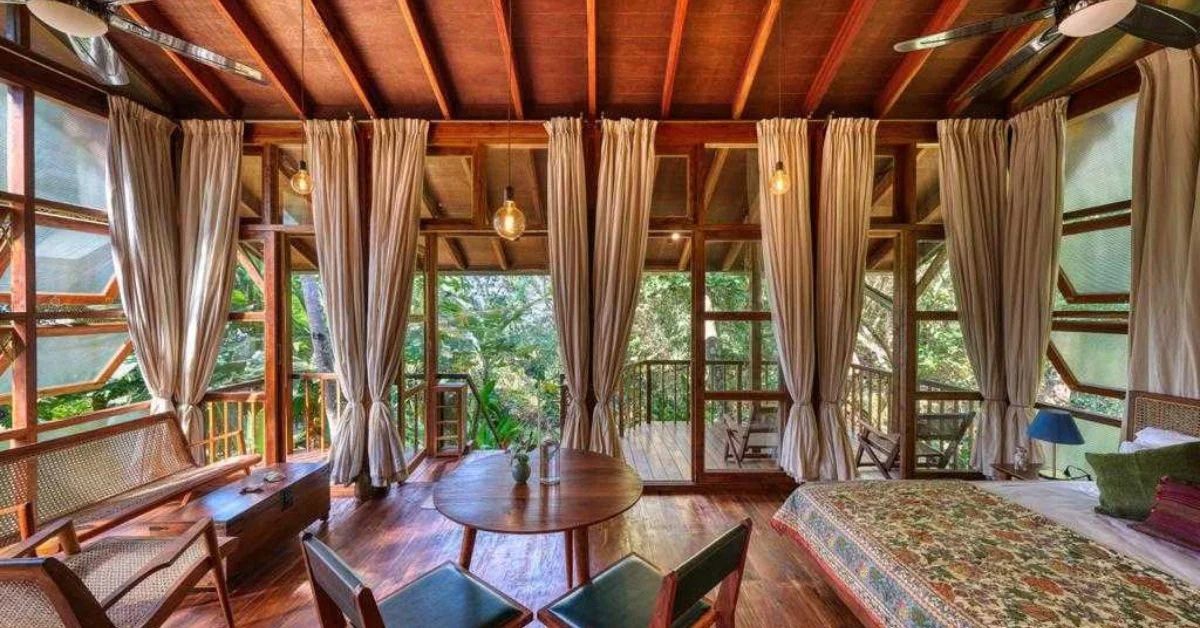
In 2007, Mangal, an “entrepreneur turned ecopreneur”, was looking to explore the nuances of an eco-friendly lifestyle. In this quest, he stumbled upon a place in coastal Karnataka nestled in the Aghanashini estuary. Mangal decided to build his home here.
“I wanted something that would be built in nature and built by nature,” he shares, pointing to his property that is built on stilts. “Our bath place has a coconut tree in the middle as we did not want to cut down any trees. The water we bathe in feeds the tree,” says Mangal.
Cane, bamboo and stone come together in a beautiful blend in the home’s exteriors while the flooring is made of material that comes from recycled acacia wood. A canopy of trees spares the home from harsh sun while keeping the chill out during winters. “The home is 2 degrees Celsius cooler than other homes on the coast,” says Mangal.
10. Chuzi
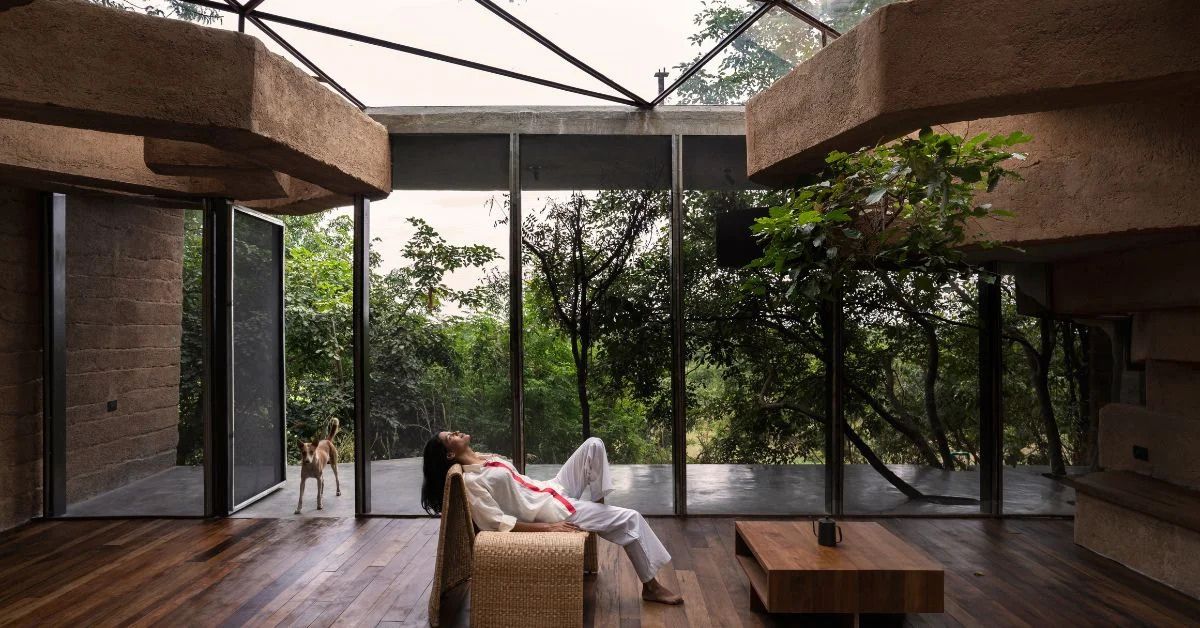
Of what use could 4,000 plastic bottles be? In the case of this sustainable home in Tamil Nadu, these served as the foundation. The house is a creation of architect Vinu Daniel — founder of Wallmakers, an award-winning architectural firm that focuses on building sustainable spaces.
The 2,122 sq-ft architectural masterpiece’s main attraction is the swirls present in the ceiling.
These are precast poured debris earth composite bottle beams, fashioned from 4,000 discarded plastic bottles. In addition to this, there is steel mesh in the construction that ensures the home is cross-ventilated while the mud insulation ensures it remains warm in winter. If you found our stories insightful, informative, or even just enjoyable, we invite you to consider making a voluntary payment to support the work we do at The Better India. Your contribution helps us continue producing quality content that educates, inspires, and drives positive change. Choose one of the payment options below for your contribution- By paying for the stories you value, you directly contribute to sustaining our efforts focused on making a difference in the world. Together, let’s ensure that impactful stories continue to be told and shared, enriching lives and communities alike. Thank you for your support. Here are some frequently asked questions you might find helpful to know why you are contributing?

Edited by Padmashree Pande.
This story made me
-
97
-
121
-
89
-
167






